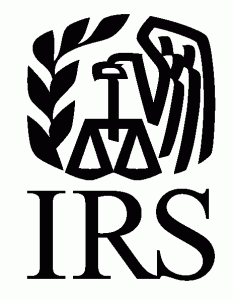Employers must exert a certain amount of time and resources to properly retaining their income tax records. But these aren’t the only documents you need to maintain. Retention of your organization’s payroll records is also important.
Rule of thumb
Most employers must withhold federal income, Social Security and Medicare taxes from their employees’ paychecks. As such, you must keep records relating to these taxes for at least four years after the due date of an employee’s personal income tax return (generally, April 15) for the year in which the payment was made. This is often referred to as the “records-in-general rule.”
These records include your Employer Identification Number, as well as your employees’ names, addresses, occupations and Social Security numbers. You should also keep for four years the total amounts and dates of payments of compensation and amounts withheld for taxes or otherwise ― including reported tips and the fair market value of noncash payments.
It’s also important to track and retain the compensation amounts subject to withholding for federal income, Social Security and Medicare taxes, and the corresponding amounts withheld for each tax (and the date withheld if withholding occurred on a day different from the payment date). Where applicable, note the reason(s) why total compensation and taxable amount for each tax rate are different.
Other data and documents
A variety of other data and documents fall under the records-in-general rule. Examples include:
• The pay period covered by each payment of compensation,
• The employee’s Form W-4, “Employee’s Withholding Allowance Certificate,”
• Each employee’s beginning and ending dates of employment,
• Statements provided by employees reporting tips received,
• Fringe benefits provided to employees and any required substantiation,
• Adjustments or settlements of taxes, and
• Amounts and dates of tax deposits.
Follow the rule, too, for records relating to wage continuation payments made to employees by the employer or third party under an accident or health plan. Such records should include the beginning and ending dates of the period of absence, and the amount and weekly rate of each payment (including payments made by third parties). Also keep copies of each employee’s Form W-4S, “Request for Federal Income Tax Withholding From Sick Pay,” and, where applicable, copies of Form 8922, “Third-Party Sick Pay Recap.”
Simple rule, complex info
As you can see, the records-in-general rule is fairly simple, but the various forms and types of information involved are complex. Please contact our firm for assistance in managing the financial aspects of your role as an employer.&f=3716662&view=true)
 Businesses: Don’t forget the upcoming deadline for wage statements and independent contractor forms. Employers are required to file their copies of Form W-2 and Form W-3 with the Social Security Administration by Jan. 31. This deadline also applies to certain Forms 1099-MISC filed with the IRS to report nonemployee payments to independent contractors. An extension of time to file is no longer automatic, and the IRS will only grant extensions for very specific reasons. “Failure to file these forms correctly and timely may result in penalties,” the IRS stated.
Businesses: Don’t forget the upcoming deadline for wage statements and independent contractor forms. Employers are required to file their copies of Form W-2 and Form W-3 with the Social Security Administration by Jan. 31. This deadline also applies to certain Forms 1099-MISC filed with the IRS to report nonemployee payments to independent contractors. An extension of time to file is no longer automatic, and the IRS will only grant extensions for very specific reasons. “Failure to file these forms correctly and timely may result in penalties,” the IRS stated.








 In guidance released in January, 2017, the
In guidance released in January, 2017, the 






 Langdon & Company LLP is pleased to announce that Meagan L. Bulloch, CPA has been admitted as partner in our audit practice. Meagan joined Langdon & Company LLP in 2008 and has over ten years of public accounting experience including work for Ernst and Young LLP in their Raleigh, NC office. She is a graduate of North Carolina State University with a Bachelor of Science and Masters of Science in Accounting.
Langdon & Company LLP is pleased to announce that Meagan L. Bulloch, CPA has been admitted as partner in our audit practice. Meagan joined Langdon & Company LLP in 2008 and has over ten years of public accounting experience including work for Ernst and Young LLP in their Raleigh, NC office. She is a graduate of North Carolina State University with a Bachelor of Science and Masters of Science in Accounting.